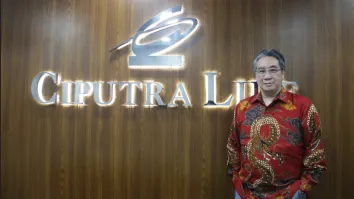
Banks urged to integrate ESG data into IT systems: McKinsey
Banks must apply a use-case driven approach to introduce new ESG capabilities.
Banks are called to integrate ESG-related data into their IT systems and processes in order to keep pace with regulator changes and consumer needs, McKinsey said in a report.
“Banks must adapt their IT systems to systematically collect, aggregate, and report on a broad range of ESG data. However, many financial institutions still do not have a comprehensive approach to integrating ESG data into their existing risk reporting,” said report authors Henning Soller, Daniel Heller, Andreas Reiter, and Sebastian Schöbl in, “ESG data governance: A growing imperative for banks.”
Moving toward this goal will require significant changes to the IT infrastructure, Soller and his co-authors noted. New applications include financed emissions models, climate risk models, ESG scorecards, climate stress tests, and climate-adjusted ratings.
“ESG data must be woven into existing processes, such as credit approvals and decision making. And banks will need to adjust their data architecture, define a data collection strategy, and reorganize their data governance model to successfully manage and report ESG data,” the McKinsey analysts said.
Three pitfalls
McKinsey laid out three issues that banks face when adapting ESG into their IT systems: functional silos, process traps, and technical debt.
Present functional silos in banks lead to disjointed processes and a fragmented data architecture that does not allow for synergies across ESG use cases, McKinsey noted.
“Effective ESG data governance thus requires a coordinated and centralized approach across multiple stakeholders. This can take place only within a culture of open communication, cross-functional collaboration, and close alignment of the business and IT functions,” the report said.
McKinsey further noted that in redesigning processes to incorporate ESG data governance, banking IT leaders must balance between two extremes—and avoid two common traps.
“On one side, a narrow focus on simplicity and standardization often leads to a failure to make the necessary adjustments to align with existing business and IT processes. On the other side, anchoring too much on legacy processes can create unnecessary complexity and hamstring the ESG data governance model,” the analysts warned.
McKinsey further advises the banks to apply a use-case driven approach to introduce new ESG capabilities in the right sequence, at the right time.
“The design of ESG technical solutions involves constant trade-offs between short-term needs and the long-term vision. Trying to solve everything at once—or devise the best possible solution—can extend development time, increase the pressure to implement short-term tactical solutions, and lead to lasting technical debt,” the analysts added.
Leaders can identify and prioritize specific ESG use cases, create clearly defined stage gates, and collect metrics to track success during interim phases. For example, consider how ESG data will be integrated into each step of the credit approval process, from customer data collection and risk scoring to credit monitoring and reporting (exhibit).
Potential use cases include customer data collection, risk scoring to credit monitoring and reporting.
Other potential use cases include regulatory and internal stress tests, analytical risk-weighted asset calculations, provisioning, risk-appetite frameworks, credit policies, capital allocation, pricing, portfolio emissions alignment, external disclosures, and internal reporting.



















 Advertise
Advertise








